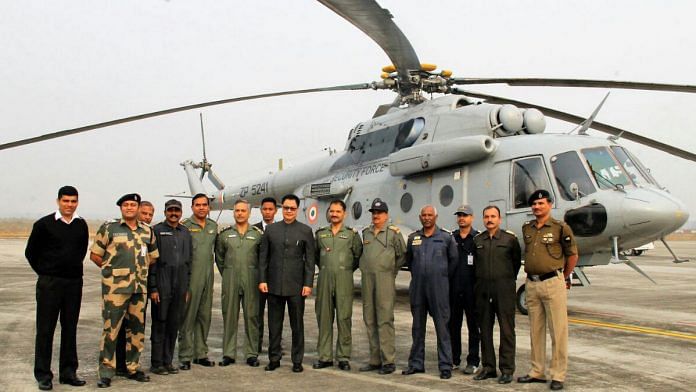New Delhi: The Border Security Force (BSF) is set to soon have its own set of regulations for its air wing, after the Lok Sabha passed key amendments to the Aircraft Act, 1934. Now the BSF, like the defence forces, is set to be outside the ambit of the Directorate General of Civil Aviation (DGCA).
BSF sources told ThePrint that the new regulations could be some combination of civilian and defence regulations, owing to the unique position of the BSF’s Air Wing in India — it is the only one of the Central Armed Police Forces or paramilitary forces to have an air wing, which caters to all other such forces.
What the Aircraft Amendment Bill entails
The larger aim of the Aircraft (Amendment) Bill, 2020, which is now set to go to the Rajya Sabha for its clearance, is to make aircraft operations in India more secure, in line with globally accepted standards and practices laid down by the International Civil Aviation Organisation (ICAO).
However, a small provision mentioned in the bill has huge ramifications for the BSF, whose air wing currently operates under both civilian and defence regulations.
The bill has a provision to keep aircraft belonging to “any other armed forces of the Union constituted by any law for the time being in force” — other than the Army, Navy or Air Force — outside the purview of the Aircraft Act. Until now, only military aircraft were kept out of the purview of the DGCA.
The regulator for military aircraft is the Centre for Military Airworthiness and Certification (CEMILAC), which provides concurrent airworthiness certification support to indigenous development, and certifies upgrades and integration of imported and indigenous systems.
However for operations and day-to-day safety, the defence forces — IAF, Navy and the Army — have their own individual sets of regulations.
BSF fleet
The BSF Air Wing owns and operates a fleet of helicopters and fixed-wing aircraft.
It has 13 Mi-17 choppers and one Embraer business jet, which operate under defence regulations.
The BSF’s fleet of six ‘Dhruv’ Advanced Light Helicopters, one Chetak chopper and an Avro aircraft are operated under DGCA regulations.
The Embraer jet, which is used to fly VIPs, was transferred to military regulations from the civil regulations only two years back.
Also read: Modi govt doesn’t know what to do with nearly 2,000 cows in BSF custody in Bengal
Split regulations had affected BSF Air Wing
BSF sources explained that its Air Wing is neither completely military, nor civilian.
“We are deployed at the international border, and flying there under military regulations would put us at risk. Moreover, we fly a number of VIPs and civilians, so we need to fly under civilian regulations,” a source told ThePrint.
However, the source said the DGCA regulates operators which are profit-oriented — commercial and private aircraft — and its regulations are not well-suited to the BSF.
“DGCA regulations are very strict because there could be cases where the operator might not put safety before profit,” the source said.
Another BSF source added: “The DGCA may have its own regulations, which are very elaborate, but may not suit the BSF. At the same time, defence regulations are extreme. IAF and DGCA regulations have some aspects in common, but in other places, they are very extreme.”
The sources said the BSF Air Wing needs a middle path, and that having its own regulations would give the force flexibility in the induction of pilots.
“Currently, pilots operating on the (BSF’s) civil flights need a civil aviation licence, which is not applicable for those aircraft flying under defence regulations,” the second source said.
Mix of civil and defence regulations
The sources said that because of these reasons, the new BSF regulations will be a mix of civil and military regulations, and could be called BSF Air Regulations (BSFAR)
“They may be 20-30 per cent military and 70 per cent civil. We will have to create a new umbrella, and this could be called the BSF Air Regulations,” the first source said.
The BSF could take a leaf out of the Coast Guard regulations, which allow civil-licenced pilots to fly their aircraft too.
“We don’t produce pilots. We are certainly dependent on civilian pilots and the Air Force,” the first source said.
The second source added that the amendments to the Aircraft Act do not mean it will immediately move out of the purview of the DGCA.
“We will have to come out with our own regulator and regulations,” the second source said.
Also read: No takers for women’s quota in CRPF, CISF or BSF as forces strive to fulfil Modi govt plan




B S F
BsF
Hii sir I am amarjeet kumar gupta ham join hona chatya hai air force ma ap mera help kar sakta hai to ap sir help kara